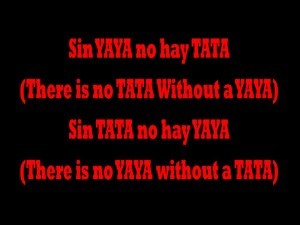The rules of Palo Mayombe have limitations and restrictions on the role of women.
This is a well-known phenomenon suffered by women around the world in different spiritual practices. Mothers, Yayas, and Godmothers play a secondary role in the most important rites of Palo Mayombe: Initiation ceremonies The preparation of the fundamentos (Ngangas) The sacrifice of four-legged animals
Despite the above-mentioned limitations, the role of women in Palo Mayombe is very important and essential for numerous reasons. Yayas do not initiate, but they play important roles in the initiation ceremonials, they bring balance and support the Tatas and the godchildren of the house, Yayas are the godmothers who give strength and guidance, Yayas are a powerful source of light and spiritual development, Yayas often represent the maternal side of Palo Mayombe.
Women represent the universal source of life. Women represent the powers of birth and creation, we all come from women. It is an undeniable fact that when it comes to consultations, healing, spiritual baths, cleansings, protection works, love spells, amulets, makutos, spiritual development, and so on, Yayas are natural witches and their powers are unlimited when it comes to witchcraft, the works of the Yayas is as powerful as they come, never underestimate the powers of a Yaya when she works with her Nganga.
In Palo Mayombe women can have their fundamento (nganga), a Yaya who has her fundamento is called Yaya Nganga, it means Yaya who owns her Nganga, a Yaya who does not have her own fundamento is called Yaya Nkisi. Yayas Nganga can attend and work their ngangas as long as they are not in their menstrual cycle.
The relationship between Tatas and Yayas has been based on mutual respect, priests know they need and complement each other, there is no Yaya without a Tata, but there is no Tata without a Yaya.
By means of this article, I want to pay homage to two powerful and famous Yayas Na Secundina and Na Filomena.
These two women were native from Congo, brought as slaves to the Sugar Mill of Santa Amalia, founded in 1853 in the town of Cimarrones, Matanzas. The town became famous for its surrounding forests, a shelter for runaway slaves, and for the miracle cures practiced by means of herbs and leaves collected in this fertile area.
Legends say that Na Secundina and Na Filomena were able to bring men back to life; they used to spend nights of prayers, cleansings, and works with the spirits to make people come back to life. The stories of the powers of healing and resurrections performed by these two powerful Yayas have been passed verbally from generation to generation. Na Filomena and Na Secundina were Yayas Nganga, they prepared their fundamentos (ngangas) by themselves using the knowledge they brought from their natal Congo.
We should never forget to honor and respect our ancestors, all the men, and women who planted the roots of Palo Mayombe, despite being taken from their natal lands and the resentments caused by their condition as slaves.
Vocabulary:
Tata – Palo Mayombe High Priest
Tata Nganga – Tata who has his fundamento
Tata Nkisi – Tata who does not have his fundamento
Yaya – Palo Mayombe Initiated High Priestess
Yaya Nganga – Yaya who has her fundamento
Yaya Nkisi – Yaya who does not have her fundamento
Fundamento – Nganga – Cauldron of the Spirits
Ashe
Yaya Maria
